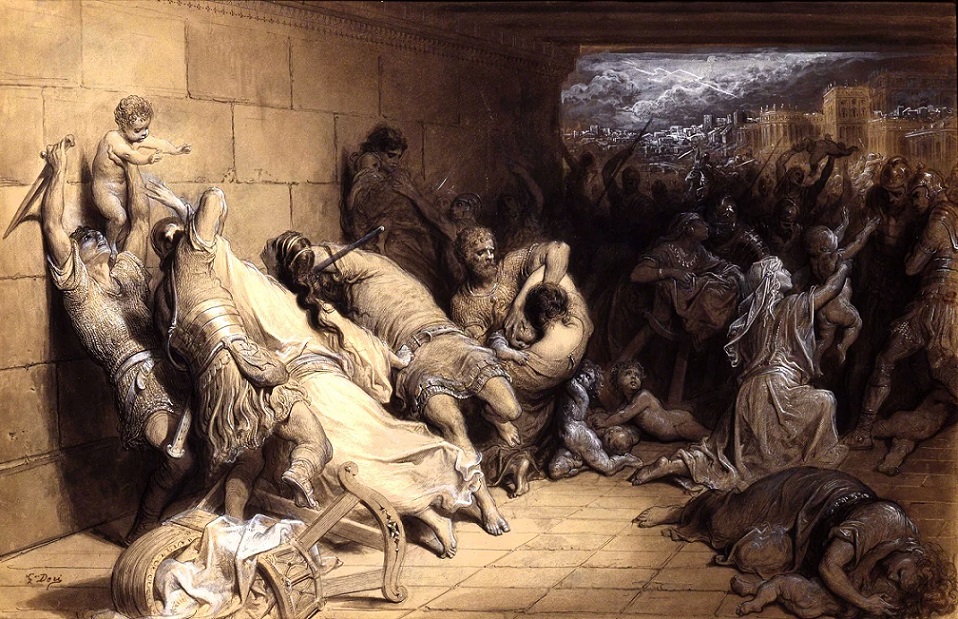Alkis Keramidas (1905 - 1980) The massacre of Distomo
Oil on hardboard
50 X 50 cm
Private collection
On June 10, 1944, one of the most brutal events in all of World War II took place in the tiny village of Distomo on the Greek mainland.
According to survivor testimony, Nazi SS troops went door to door and massacred 218 Greek civilians.
Survivors said that the Nazis bayoneted babies in their cribs and stabbed pregnant women and beheaded the village priest. It was a two-hour killing spree ordered by the Germans in retaliation for rebel activity in the area.
Following the massacre, a Secret Field Police agent accompanying German forces told authorities that, contrary to an official report from Nazi commander Fritz Lautenbach, German troops had come under attack several miles away from Distomo — not nearby.
The Secret Field Police said that the Germans had not been fired upon “with mortars, machine-guns and rifles from the direction of Distomo.”
Lautenbach later admitted that he had surpassed standing orders, but a tribunal ruled in his favor. The tribunal found that he was not motivated by negligence, but instead a sense of responsibility for his men.
More on The massacre of Distomo
Keramidas Alkis was born in High Fthiotida in 1905 and died in 1980. He was a prolific Greek artist with hundreds of paintings currently in public and private art collections in Greece, Europe and the US. In addition to his paintings, his work included theater sets, fabric designs, book illustrations and pottery.
He studied painting at the Athens School of Fine Arts (1924-1932). He moved in the frames of naturalistic tendencies, often with a gullible way and in certain work, particularly those of last period, with an intensely decorative perception of so much drawing of what colour. He presented his work individually and took part in group exhibitions as well. He taught for many years in the secondary education as well as in the pedagogic school of Athens University (1933-1976). He was member of the team “Free Artists” and EETE. More on Keramidas Alkis
Please visit my other blogs: Art Collector, Mythology, Marine Art, Portrait of a Lady, The Orientalist, Art of the Nude and The Canals of Venice, Middle East Artists, 365 Saints, 365 Days, and Biblical Icons, also visit my Boards on Pinterest
Images are copyright of their respective owners, assignees or others.
Some Images may be subject to copyright
I don't own any of these images - credit is always given when due unless
it is unknown to me. if I post your images without your permission, please tell
me.
I do not sell art, art prints, framed posters or reproductions. Ads are
shown only to compensate the hosting expenses.
If you enjoyed this post, please share with friends and family.
Thank you for visiting my blog and also for liking its posts and pages.
Please note that the content of this post primarily consists of articles
available from Wikipedia or other free sources online.



%20The%20massacre%20of%20Distomo.jpg)








.%20Wartime%20Evacuation.jpg)





